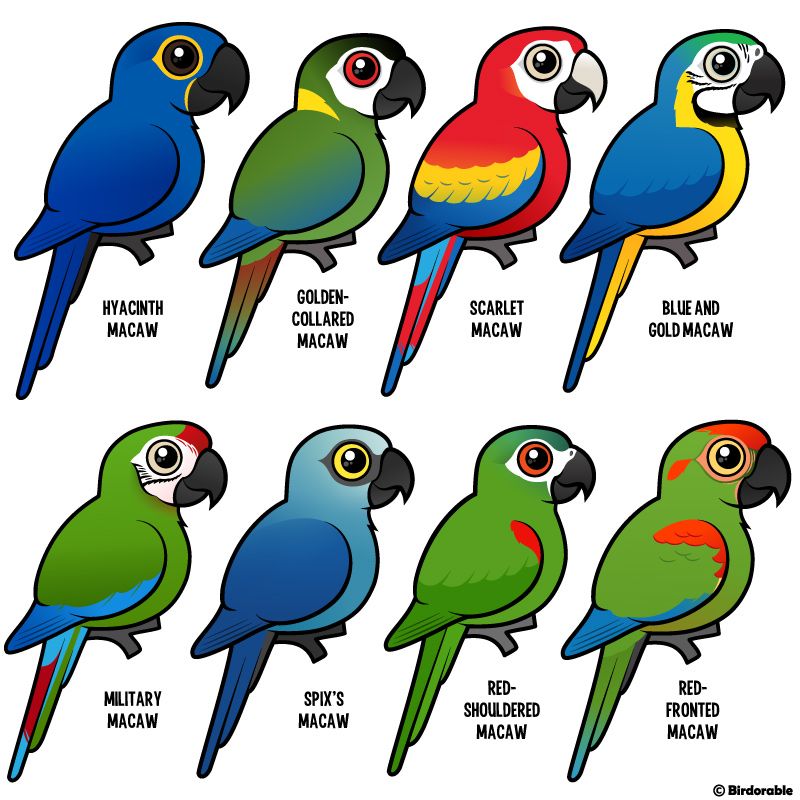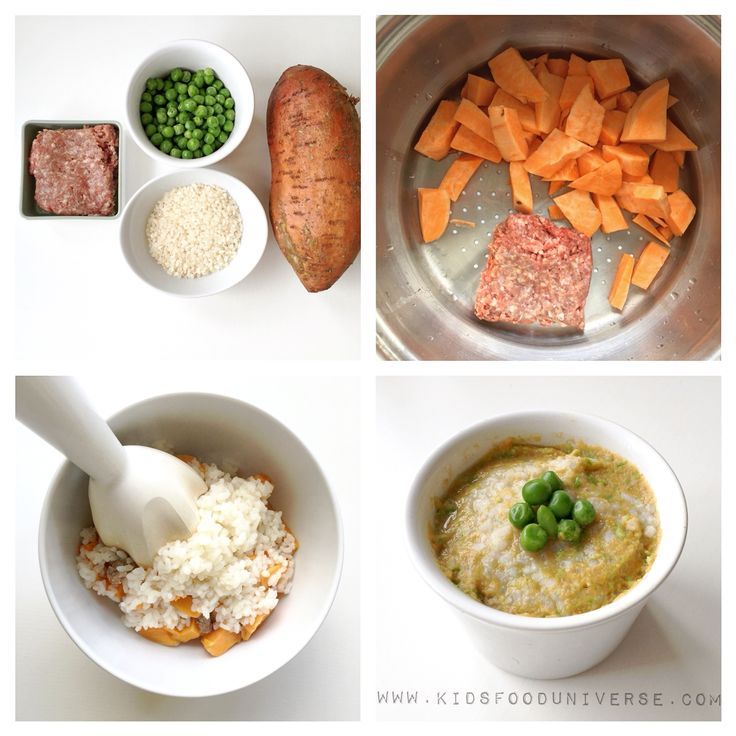Baby bottles with straws self feeding
Pros & Cons of Cups and Straws
Read time: 6 minutes
What should I know about cups for babies and toddlers?When to discontinue bottle use
Benefits of using a variety of cups to support optimal oral motor skill development
How to choose the best kinds of cups for your baby
Whether or not you continue to nurse throughout the toddler years, pediatricians recommend weaning your baby from the bottle (of breastmilk or formula) and switching to a toddler cup at approximately 12-24 months old.1 Transitioning from bottle to toddler cup (for all liquids other than directly from the breast) will allow your baby to exercise their face muscles, tongue, and soft palate, all of which are connected to speech and feeding.2,3
Teaching your little one to use a cup
With so many cup options on the market, it can be overwhelming to understand which one to try with your baby. All cups, whether open, straw, or toddler sippy cup, will require your baby to use their tongue and mouth differently than when drinking from a bottle. Offering a variety of toddler cups allows your baby to practice new drinking skills as they transition away from the bottle.
In addition to learning the proper tongue and mouth placement for drinking, your baby must also master the hand-eye coordination required to hold, lift, and tip the toddler cup towards their mouth, all while sitting upright.4
According to the American Dental Association, to help your child learn how to sit, lift the cup, and sip, look for training cups that have:
A cup with a snap-on or screw-on lid that has a spout, but no spill-prevention valve
Cups with two handles
Cups with a weighted base to keep them upright and cut down on spills3
Many parents purchase a typical sippy cup first because they’re no-spill and easy to tote around, however they’re essentially baby bottles with a slightly different design.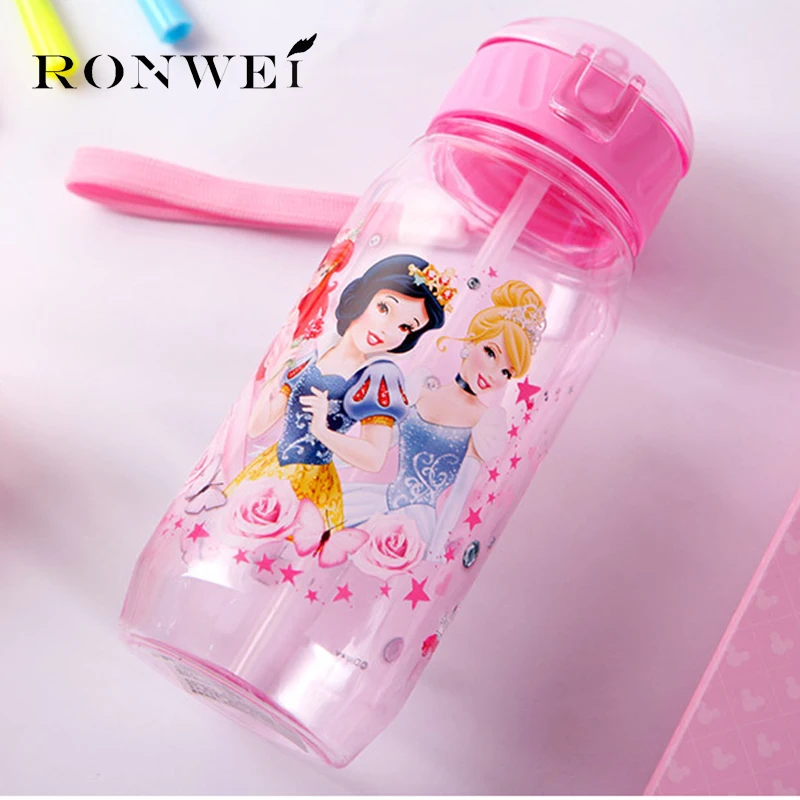 With sippy cups, your baby has to suck – not sip – in order to get the liquid out. However, the aim is to shift from sucking (like from a bottle) to sipping (as you would with a cup).5
With sippy cups, your baby has to suck – not sip – in order to get the liquid out. However, the aim is to shift from sucking (like from a bottle) to sipping (as you would with a cup).5
Note that training cups and sippy cup is meant to be used temporarily. Once your baby has learned how to sip, it is no longer needed, and an open cup is recommended. 4, 6,7
Straw cupStraw toddler cups can help with learning how to sip; however, they offer less practice for the other skills. This is because your baby can successfully drink from a straw cup while still reclining and sucking, and not sitting upright or fully tipping the cup to their mouth.
Open cupSome babies go straight from a bottle to an open cup, so consider this option as well. Babies are developmentally ready to sip from an open cup, held by another person, starting around 6 months of age.6 Once they’re able to sit up unassisted and seal their lower lip on the rim of the cup, you can practice by holding an open cup with a small amount of water or milk to your baby’s mouth, and tipping it slightly towards your baby.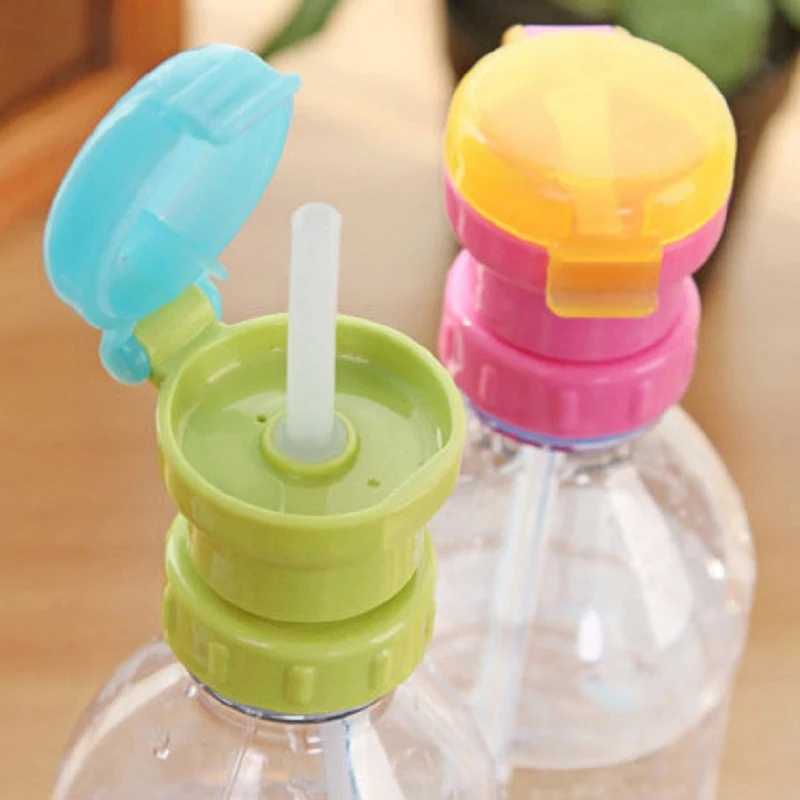
Starting to practice with different cups at six months helps to ensure your baby is able to successfully transition off of the bottle around their first birthday.1
Read more: Dehydration in Kids: How to Keep your Baby or Tot Hydrated
Which cup: Bottom lineSippy cups (without a valve) should only be used for a few months as a learning tool. Once your little one can pick up the cup and tip it to sip, an open cup is the next step!
Straw cups are also a transition tool – but there are certain situations where they can continue to be useful, provided they are only used occasionally. A straw cup may be a good option for a long car or plane ride to help prevent spills. You can also consider a spout cup (without the internal straw), which requires your little one to tip the cup up to drink.
But the bottom line is that open cups should be used most often to ensure your little one’s mouth and tongue are developing appropriately.
How do I transition my baby to cups?Try different types of cupsSome children need a subtler transition from a bottle to a softer-spout toddler cup, while others do well with the big jump between bottle (of breastmilk or formula) and a plastic toddler cup containing water.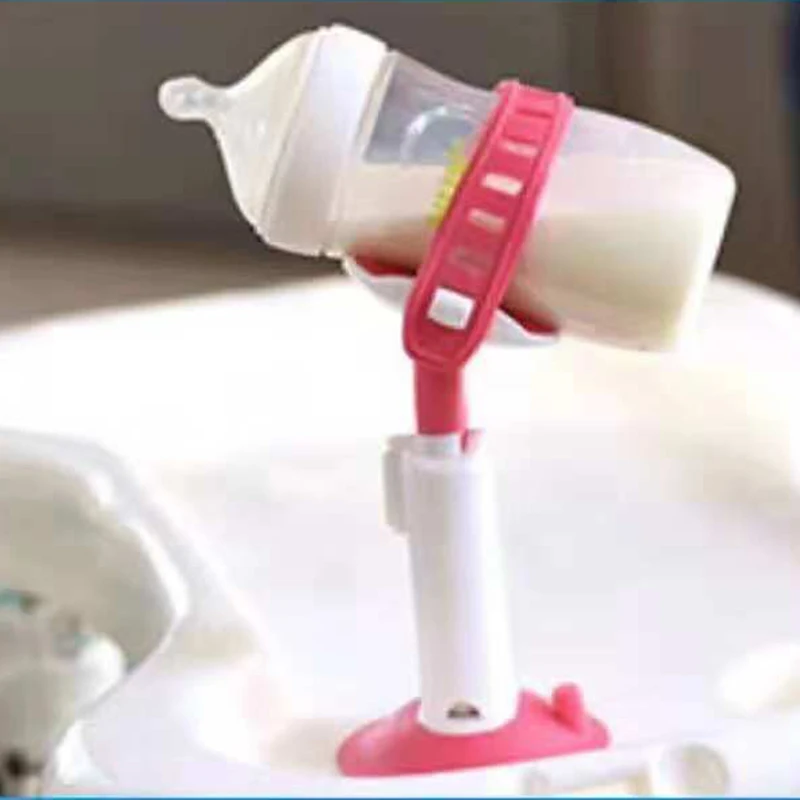 Experiment with different cups to determine what works best for your baby.
Experiment with different cups to determine what works best for your baby.
Read more about what beverages to provide your baby and toddler.
Remove the spill-proof valves from sippy cupsDon’t worry so much about spills. Instead, focus on letting your baby practice drinking from a cup. The spill-proof valves on toddler sippy cups may impede your baby’s success with drinking because they can make it more challenging for the child to get any liquid out of the cup, and they encourage sucking over sipping.
By removing the spill-proof valve or choosing a cup without one, your baby will have to learn to tip the cup and sip in order to get liquid from it, much like drinking from an open cup.
Allow your baby to sip water from your open cupPractice makes progress! Let your 6+ month old baby practice drinking from a cup of water that you are holding. Or try holding a small, child-sized cup with a few tablespoons of water in it.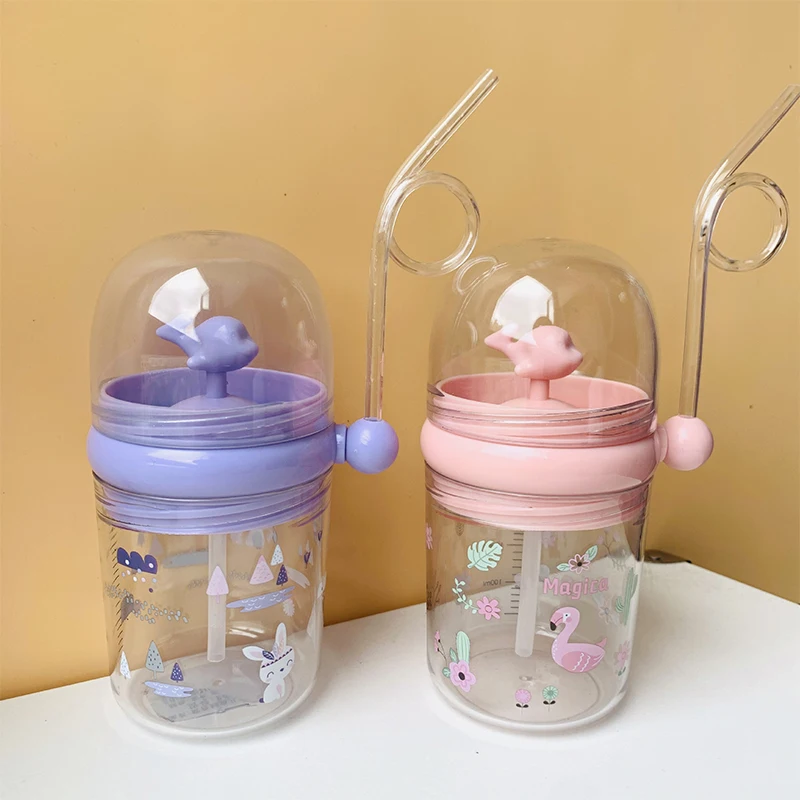
Your baby must develop oral motor control to learn how to seal their lips on the side of an open cup, receive some water, keep that seal while swallowing and move the cup away from their mouth.7 You will see lots of dribbling down baby’s shirt and spilling initially, but making a mess is part of the fun!
Present breastmilk or formula in a cupSome babies have an easier time transitioning to a new cup if you present them with a familiar taste. For babies who are exclusively or partially bottle-fed (as opposed to exclusively breastfed), try giving your baby half of their breastmilk or formula in a bottle and the last few ounces in a cup.
When you switch out the bottle for the cup, continue to snuggle with your baby like you normally would when feeding from the bottle. You can also try having your baby suck on the bottle nipple for a few seconds, and then switch over to a cup containing breastmilk or formula. For babies who are exclusively fed at the breast, follow all other suggestions in this section.
Read More: Introducing Formula to a Breastfed Baby
Offer toddler cups with easy-to-hold handlesHolding, lifting, and tipping the cup to drink is an important part of the learning process for your baby. Some companies sell handles that fit on bottles, sippy cups, and straw cups interchangeably, which can make for an easier transition. However, because of their ease of holding and carrying around, many toddlers will hold onto their cup of liquid all day long, much like a security blanket.1 Additionally, sipping on breastmilk or formula, or other sugary beverages such as juice, all day long between meals can contribute to tooth decay.8
These are great reasons to seek out open cups with handles made for babies and toddlers and provide liquid at meal and snack times.
Additional helpful recommendations about baby and toddler cupsDo not let your child drink from a cup that is scratched or damagedA worn cup with scratches is more likely to harbor bacteria and, if the damaged cup contains bisphenol A (BPA), may release small amounts of the chemical. While research on the effects of BPA on humans continues to advance, there is enough evidence confirming risk and, many manufactures no longer use the chemical in their baby cups. Notice whether a cup sports a “BPA-free” label before purchasing.9
While research on the effects of BPA on humans continues to advance, there is enough evidence confirming risk and, many manufactures no longer use the chemical in their baby cups. Notice whether a cup sports a “BPA-free” label before purchasing.9
Toddler sippy and straw cups with lots of parts have nooks and crannies may trap bacteria and other germs – yet another reason to promote open cups as soon as your baby can handle them! Separate all the valves from inside sippy cups and take out the straws to clean the cups thoroughly before hand-washing or running through the dishwasher. Look for toddler cups that are easy to separate, clean and sterilize to make your life easier.
Do not let your child go to bed with a sippy cup or bottleIf your baby falls asleep while drinking from a toddler sippy cup or bottle, the milk may pool in the back of their throat and coat their teeth with sugar-containing liquid for the entire night. 3,9 (Even breastmilk has naturally occurring sugar!) Be sure to separate your baby from their drinking source and brush those teeth before bed.
3,9 (Even breastmilk has naturally occurring sugar!) Be sure to separate your baby from their drinking source and brush those teeth before bed.
We know parenting often means sleepless nights, stressful days, and countless questions and confusion, and we want to support you in your feeding journey and beyond.
Our Happy Baby Experts are a team of lactation consultants and registered dietitian nutritionists certified in infant and maternal nutrition – and they’re all moms, too, which means they’ve been there and seen that. They’re here to help on our free, live chat platform Monday through Friday, from 8am–6pm (ET). Chat Now!
Read more about the experts that help write our content!
For more on this topic, check out the following articles:
Healthy eating for kids
Introducing solids: Purees versus Baby Led Weaning
Choosing the Best Bottles and Nipples for your Baby
What Type of Milk Should my Toddler Drink?
nuanchu 10 ounce self feeding Price in Saudi Arabia
nuanchu 10 ounce self feeding Price in Saudi Arabia | kanbkamFilter
Category
- Babies Essentials 1
Brand
- My Bebe 1
Price Range
Price Drop
Seller
Amazon Sellers
Popularity Price: Low to High Price: High to Low Recent Updated Relevant Top DropFilter
Category
- Babies Essentials 1
Brand
- My Bebe 1
Price Range
Price Drop
Seller
Amazon Sellers
-
My Bebe Baby Self Feeding Cushion, Baby Self Feeding Pillow, Baby Feeding Bottle Holder, Bottle Feed, Newborn Baby, Small, 3.
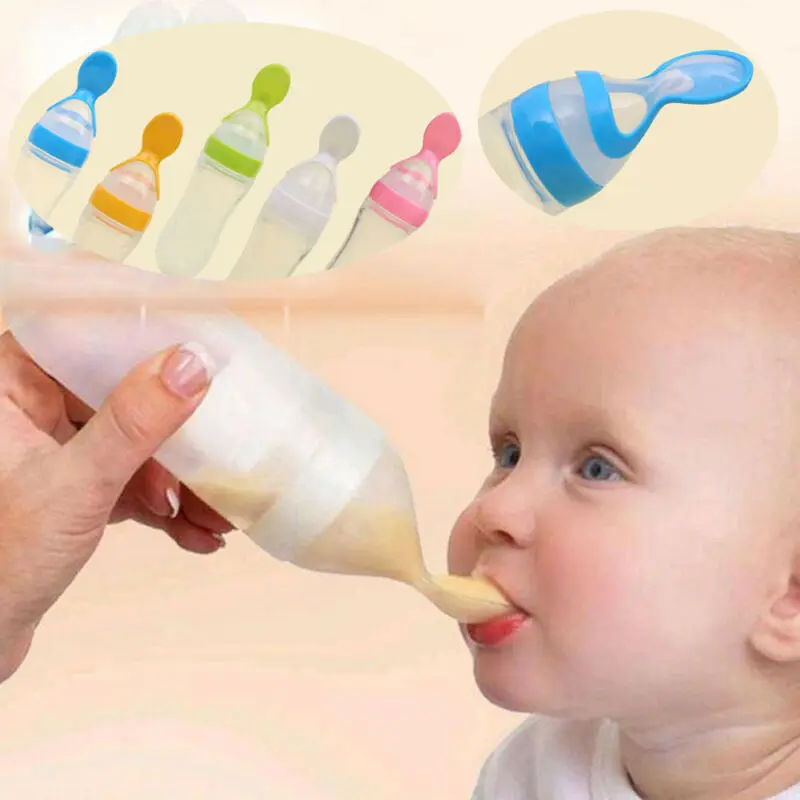 5 Ounce
5 Ounce235.99 SAR
296.84
- -21%
Avent Baby Dishes Philips Straw Cup 9m+ - “The best cup for your baby! I will share a life hack on how to clean a cup in hard-to-reach places👌»
Good day to everyone! 🍀🖐
Today I would like to share with you my impressions about using a children's cup with a straw from the famous company PHILIPS AVENT. Age 9 months +
Since the price is not so low, I tried to find a lower cost alternative, and after reading various reviews I decided that I should take it and did not lose.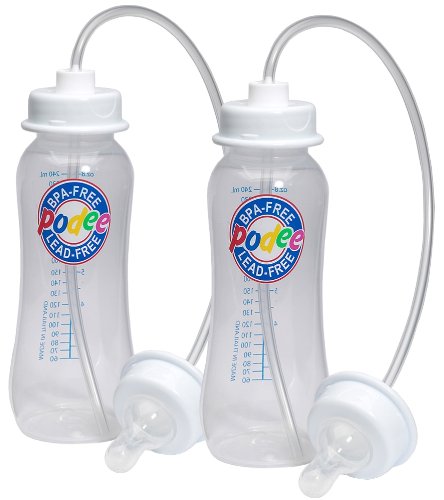 nine0003
nine0003
I'll start with the most important thing - the material.
The plastic from which the drinking cup is made is of high quality, strong, does not wrinkle, has no smell.
The handle is ribbed so that the child is comfortable to hold in his hand and does not slip👇
Straw and internal valve are made of food grade silicone.
The tube inside the bottle is plastic.
If the bowl is turned upside down, the liquid does not spill out, so there is no need to be afraid that the baby will drop or spill the drink on himself. nine0003
If necessary, the cup can be closed with a lid
To clean the sippy cup, it can be easily disassembled, then I will share how to clean it with ease in difficult places.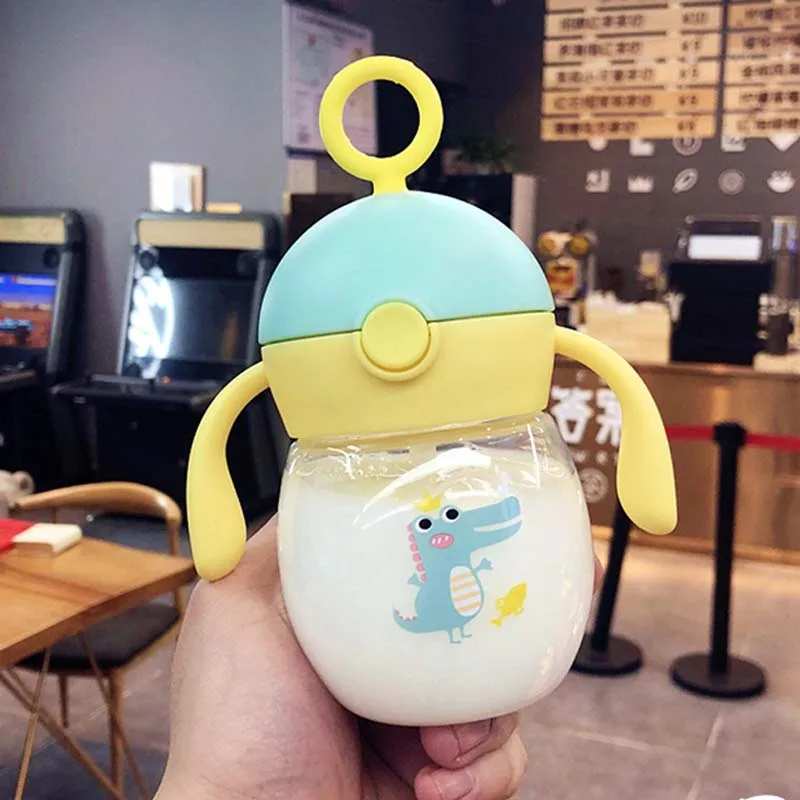
After several months of use, we realized that we need another such cup😁
And we took a cup without handles and a larger volume. (Age 12m+)
Despite the fact that it is without handles, it is also comfortable to hold and does not slip off children's hands.
And what made me very happy was that the lids of these cups turned out to be interchangeable👇👌
Another thing I wanted to say. With the help of this cup, my daughter learned how to drink from a straw. As long as I didn't show it. And by her own example, she pressed the box with juice, nothing helped, but as soon as she offered to drink from this drinker, she immediately understood and after that she easily began to drink juice from a straw. Therefore, who else has encountered such a problem, try to start learning with such a drinker. nine0003
nine0003
And now I would like to share a way how to wash it so that mold or some other muck does not appear in hard-to-reach places.
I think many mothers have encountered such a problem, especially when after yogurt or compote there are traces that are not amenable to either running water or boiling water.
And so Step 1:
We disassemble the structure, and we also need a piece of cotton wool and a straw for a cocktail👇👇
nine0002 Step 2 : Tear off a piece of cotton wool and roll up small balls and put it in a drinking tube👇Step 3: Take a straw and put it into the tube along with cotton 👇
This is how you can clean the inside of the straws. Then rinse with water and the tube is again ready for use.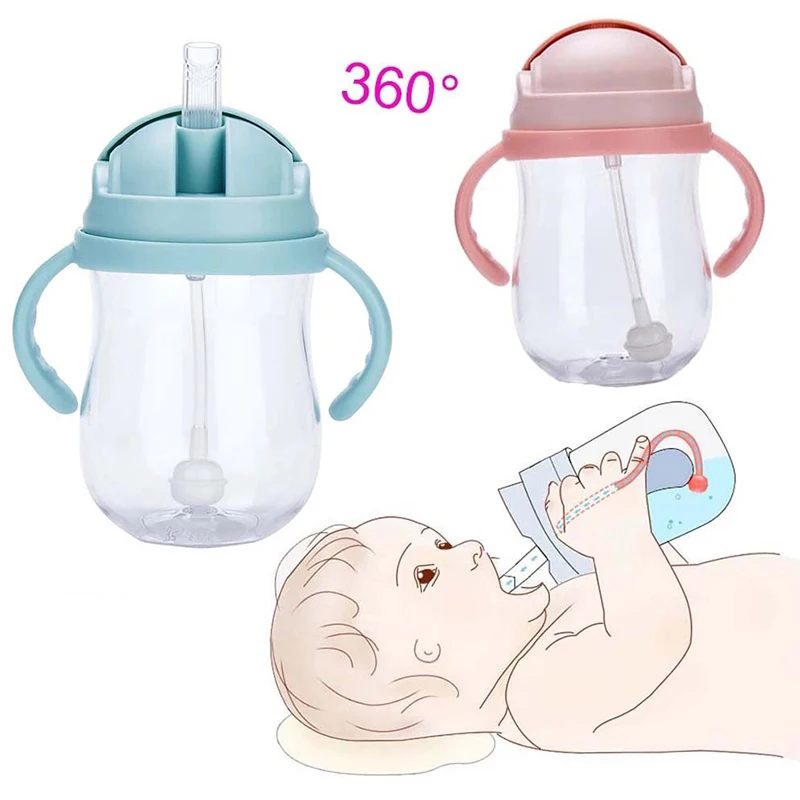 We do the same with the silicone valve: 👇
We do the same with the silicone valve: 👇
And here is a comparison of tubes before/after👇
During the use, no shortcomings were noticed for me. The only thing I would highlight is that there is no measuring scale on the bottles, but this is not critical.
And I bought them at Wildberries - they have the cheapest price there. In stores, their cost is many times more expensive.
Article - 4886968
nine0002 Article - 4886956I hope I was useful to someone. I also have reviews on other baby products that you can find below at the link👇👇
Yokosun diaper panties
Huggies diaper panties for girls
Toptyshka puree + DIY game in 10 minutes
Nestle milk porridge
Snack for baby, Agusha rice cakes
Children's tea "When I grow up"
Feedback on our stroller Bebetto Torino 2 in1
And others on my profile.
Happy shopping everyone!🖐
Choosing baby bottles for feeding: Photo review
Every mother knows that breast milk is the best food for the baby , so she tries to continue breastfeeding as long as possible. But there are situations when a mother cannot be with the baby all the time due to circumstances, or cannot breastfeed for medical reasons , or is forced to switch to mixed or artificial feeding. From time to time, all mothers express breast milk so that during their absence the baby will be fed by a nanny or one of the family members. Therefore feeding bottle is not just an important item, but a necessary item for baby care. Even if the baby only eats mother's milk, the bottle may be needed for water or baby tea. Modern mothers have the opportunity to use bottles that are perfect in shape and quality. Feeding bottle in the 21st century is no longer just a vessel for pouring liquid.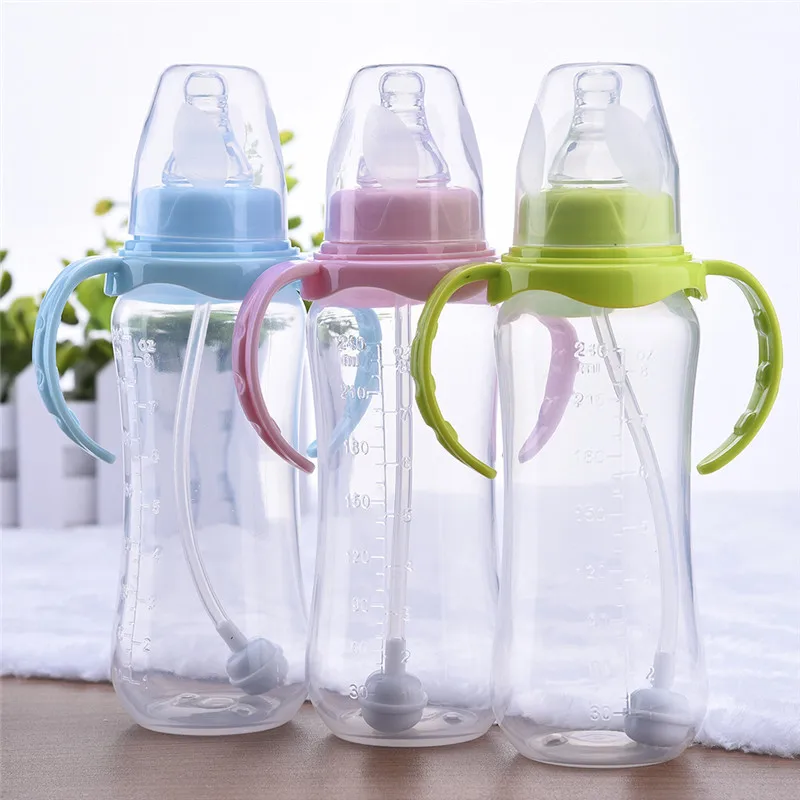 This is an ultra-modern device - anatomical, orthodontic, equipped with the latest know-how. nine0003
This is an ultra-modern device - anatomical, orthodontic, equipped with the latest know-how. nine0003
A bit of history
The first devices for feeding babies began to appear in the Middle Ages. They were a cow horn with a strip of soft skin at the end as a nipple. In Rus' for artificial feeding also a cow horn was used, on which a cow's udder teat was put on. In the 17th century, vessels made of wood and skin of domestic animals were used in Europe , then pewter bottles and children's drinkers appeared. Most drinkers were flask-shaped and had a hard nipple, and a hole for pouring milk was located on top. nine0085 At the beginning of the 19th century, drinking bowls and bottles were made in pottery workshops from ceramics , the surface was decorated with faience glaze, a little later glass drinking bowls appeared. The big breakthrough in bottle production came in the 1840s with the introduction of vulcanized rubber, which was used to make nipples. Around the same time, mass production of baby bottles began. Feeding bottles continued to evolve , the shape and material changed, but one thing remained the same - baby feeding devices were completely unhygienic and difficult to clean, therefore they posed a great threat to children's health. Popular for a long time narrow-necked glass bottle, only introduced in the 1950s . Over time, traditional bottles have been replaced by products made from high-quality materials. For many parents, 's combination of ease of use and the benefits of is the main selection criterion for a baby bottle.
Around the same time, mass production of baby bottles began. Feeding bottles continued to evolve , the shape and material changed, but one thing remained the same - baby feeding devices were completely unhygienic and difficult to clean, therefore they posed a great threat to children's health. Popular for a long time narrow-necked glass bottle, only introduced in the 1950s . Over time, traditional bottles have been replaced by products made from high-quality materials. For many parents, 's combination of ease of use and the benefits of is the main selection criterion for a baby bottle.
Bottle material
Food grade plastic bottles have gradually replaced glass bottles: they are lighter in weight and safer to use.
Most manufacturers choose as material:
- polypropylene (NUK, AVENT, World of Childhood, Nuby, bibi, Medela)
or
- polyethersulfone (AVENT)
are types of damage-resistant plastic that do not chemically react with milk and do not release Bisphenol-A during sterilization. Polyethersulfone is highly durable - it is resistant to stains and scratches. Polyethersulfone bottles look like new even after prolonged use. nine0003
Polyethersulfone is highly durable - it is resistant to stains and scratches. Polyethersulfone bottles look like new even after prolonged use. nine0003
Canpol Babies makes some of the bottles using the latest Tritan material, which is safe and hygienic. Such bottles do not need to be sterilized and boiled before each use (Canpol Babies Africa, Canpol Babies LOVI). Heat-resistant medical glass bottles are available from Chicco and CanpolBabies.
Teat
Bottle teats are made of latex or silicone. Silicone nipples are softer, not subject to deformation and tolerate sterilization well. Pacifier shape can be simple or orthodontic . Orthodontic teats contribute to the proper development of the child's oral cavity and help to bring the feeding process as close as possible to the natural one. The NUK teat has an asymmetrical shape that mimics the shape of a mother's nipple during breastfeeding.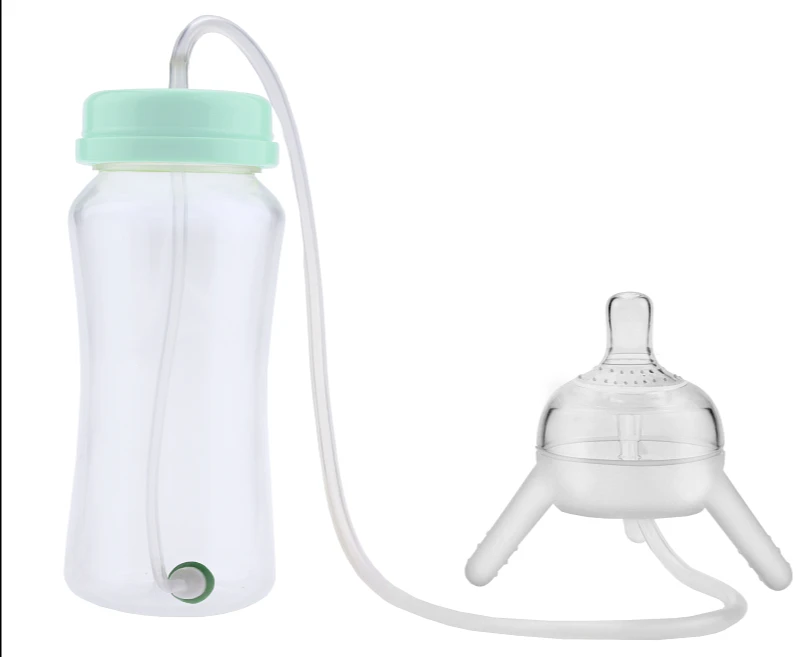 Orthodontic nipples for their bottles are produced by World of Childhood, Canpol Babies, bibi. The MedelaCalma nipple allows the baby to maintain a natural sucking pattern - breast milk flows only when the baby creates a vacuum with the movement of the tongue and jaws. nine0085 Avent teats work on the same principle. Avent nipples from the new Natural series are wide, follow the shape of the breast and have petals on the inside to prevent sticking.
Orthodontic nipples for their bottles are produced by World of Childhood, Canpol Babies, bibi. The MedelaCalma nipple allows the baby to maintain a natural sucking pattern - breast milk flows only when the baby creates a vacuum with the movement of the tongue and jaws. nine0085 Avent teats work on the same principle. Avent nipples from the new Natural series are wide, follow the shape of the breast and have petals on the inside to prevent sticking.
Each bottle has a handy cap to keep the teat clean.
Feeding bottle shape
Most bottles have a narrower “waist” which makes them more stable and easier to use. Compared to straight-shaped bottles, ergonomically shaped bottles are anatomically adapted to both the adult hand and the not-so-skillful children's fingers. Growing up, the baby tries to independently support the bottle during feeding - this gives him great interest and special pleasure. Older kids will like donut-shaped bottles with a hole in the middle - it is very convenient to grab it with both hands (Easy gripper bottle from Canpol Babies).![]() Modern bottles, compared to their predecessors, have a wider mouth than - this makes it easier to prepare baby food and wash the bottle (Canpol Babies Easy Start, NUK First Choice, Childhood World). Breast bottle is designed to mimic a mother's breasts and is made from high purity medical grade silicone. The anatomically shaped bottle provides the same type of sucking as with natural feeding. nine0003
Modern bottles, compared to their predecessors, have a wider mouth than - this makes it easier to prepare baby food and wash the bottle (Canpol Babies Easy Start, NUK First Choice, Childhood World). Breast bottle is designed to mimic a mother's breasts and is made from high purity medical grade silicone. The anatomically shaped bottle provides the same type of sucking as with natural feeding. nine0003
Volume scale on baby bottles
Feeding bottle must have volume scale applied on the outside with environmentally friendly paint. A clear scale will allow to properly prepare the milk formula and track the amount of milk drunk by the child . It is important that the scale be in milliliters - this will avoid mistakes when preparing infant formula.
Anti-colic feeding bottles: operating system
Modern manufacturers have developed bottle models with an anti-colic system that makes feeding a baby natural and reduces the risk of colic . For NUK, AVENT, Chicco, Nuby baby bottles, the nipple skirt has a reliable air valve that regulates airflow and reduces the risk of colic. Air during sucking enters the bottle, and not in the baby's tummy. Patented Dr. Brown's has a unique ventilation system consisting of a valve and a special tunnel. This system helps to reduce colic, gas and regurgitation, as well as eliminates the occurrence of a vacuum in the bottle, thereby reducing the likelihood of inflammation of the middle ear. The Tommee Tippee Closer to Nature Anti Colic Plus bottle has a complete valve system for optimal ventilation and a heat sensitive tube to keep the milk at the right temperature.
For NUK, AVENT, Chicco, Nuby baby bottles, the nipple skirt has a reliable air valve that regulates airflow and reduces the risk of colic. Air during sucking enters the bottle, and not in the baby's tummy. Patented Dr. Brown's has a unique ventilation system consisting of a valve and a special tunnel. This system helps to reduce colic, gas and regurgitation, as well as eliminates the occurrence of a vacuum in the bottle, thereby reducing the likelihood of inflammation of the middle ear. The Tommee Tippee Closer to Nature Anti Colic Plus bottle has a complete valve system for optimal ventilation and a heat sensitive tube to keep the milk at the right temperature.
For older children
In the process of natural development, children learn to be independent. When your baby can grasp and hold objects, you can offer him a drink from the Anti-Spill Cup . Non-spill mugs (AVENT, Canpol Babies) have a special design valve that facilitates the process of drinking and prevents the liquid from pouring out if the baby suddenly drops the mug. Non-spillers have removable handles and spout . For babies from 6 months the drinking spout is made of silicone to make a smooth transition from teat to cup. nine0085 For older children use a hard spout with faster flow. For learning to drink independently, you can also use regular bottles with anatomically shaped handles , which are designed specifically for small hands and do not slip (Nuby, NUK, Canpol Babies).
Non-spillers have removable handles and spout . For babies from 6 months the drinking spout is made of silicone to make a smooth transition from teat to cup. nine0085 For older children use a hard spout with faster flow. For learning to drink independently, you can also use regular bottles with anatomically shaped handles , which are designed specifically for small hands and do not slip (Nuby, NUK, Canpol Babies).
Some babies adapt to the bottle right away, while others take a long time to get used to. If the nipple is brought closer to the mouth, the baby begins to reflexively open his mouth and try to suck.
But when he feels a foreign object that does not look like his mother's breast, he will spit out the pacifier. You will have to try more than once until the child gets used to it and begins to calmly suck from the bottle. Parents can buy the most expensive and technically perfect bottle, and the baby may not like it .![]()


